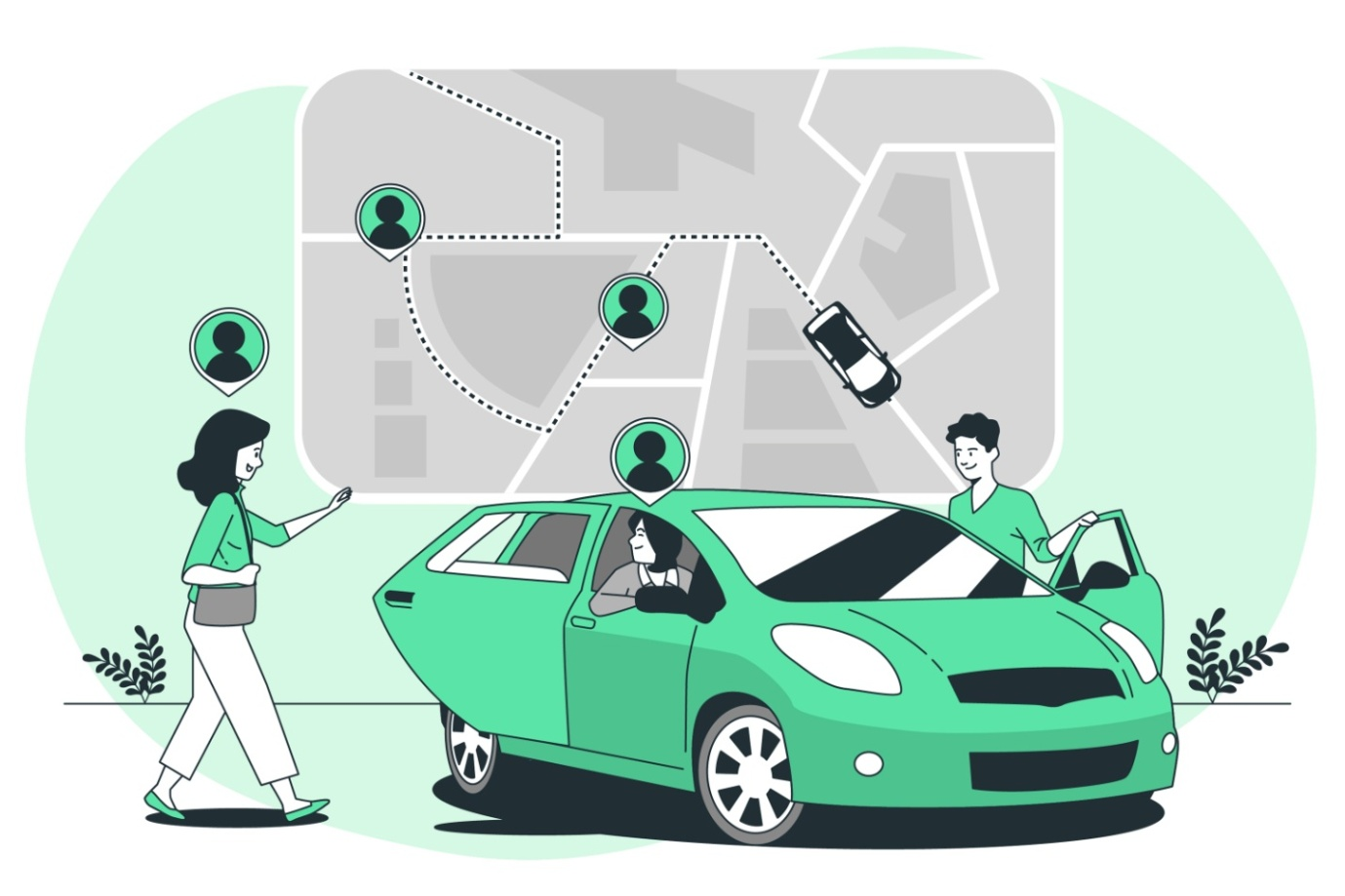Car sharing
How does car sharing work?
An average car is used for a few hours per day, with a lot of taxes, occupying a parking lot for nothing. The concept of car sharing includes borrowing a car (paying a fee) for a limited time, from its owner, through a specialized platform. It allows users to get access to someone else's car, when it is not in use. While car rental is a business, based on dedicated cars for rental, this concept contributes to an increase in the time of use for the existing cars.
By car sharing, individuals gain access to a fleet of vehicles on a short-term basis, typically by the hour or by the minute.
Car-sharing services use technology, such as mobile apps and online platforms, to facilitate vehicle reservations, unlock vehicles, and track usage. This model promotes shared ownership and efficient use of resources, reducing the need for private car ownership and alleviating issues related to traffic congestion, parking scarcity, and environmental pollution in urban areas.
 Picture source: Flickr
Picture source: Flickr
Today, car sharing has become a global phenomenon, with a variety of services tailored to the needs of different communities and market segments. Innovative business models to meet the growing demand for sustainable mobility solutions are on their way.
What are the advantages of car sharing?
- It can be more cost-effective than owning a private vehicle, especially for individuals who don't require frequent access to a car. Users pay for car usage only when needed, avoiding expenses such as: purchasing, maintenance, insurance, and parking.
- Helping decrease carbon emissions and environmental pollution by promoting shared vehicle usage and reducing the total number of cars on the road.
- Contribution to more efficient use of urban space and resources by reducing traffic congestion, parking demand, and the need for private car ownership.
What are the challenges?
- Car-sharing services may have limited coverage areas, particularly in rural areas with lower population densities.
- Sharing relies heavily on technology platforms for vehicle reservations, access control, and billing. Technical glitches, connectivity issues, or system outages can disrupt service availability and inconvenience users.
What is carpooling?
Carpooling is the concept of sharing your car to accommodate more than one person at a time, eliminating the need for riders to drive alone in separate vehicles. There are great benefits to carpooling such as shared costs and reducing the number of individual cars on the road.

Picture source: Freepik
The carpooling application works between the driver, passenger, and admins. The passenger books the ride by giving the pickup and drop location and if it is feasible for the driver, they accept it. After reaching the destination, the passenger makes the payment.
Currently, there are specialized sites, turned into mobile applications, that ensure contact between those who offer rides for certain distances and those who are looking for transport - for free or with costs. The best-known (oldest) app is BlaBlaCar, then Zipcar, and Citizcar, but there are others, with local or regional coverage.

Picture source: Freepik
An EU project, implemented in Denmark (Drive together or share the car) has benefited from 400,000 EUR funding, for information and behavioural campaigns aimed at informing about the challenges related to ”transport waste” as well as highlighting the benefits associated with car sharing and carpooling. The campaign started with the car-sharing theme in the autumn of 2022 and has been expanded to include the theme of carpooling in early 2023. The films are available and shared on social media.
Videos:
